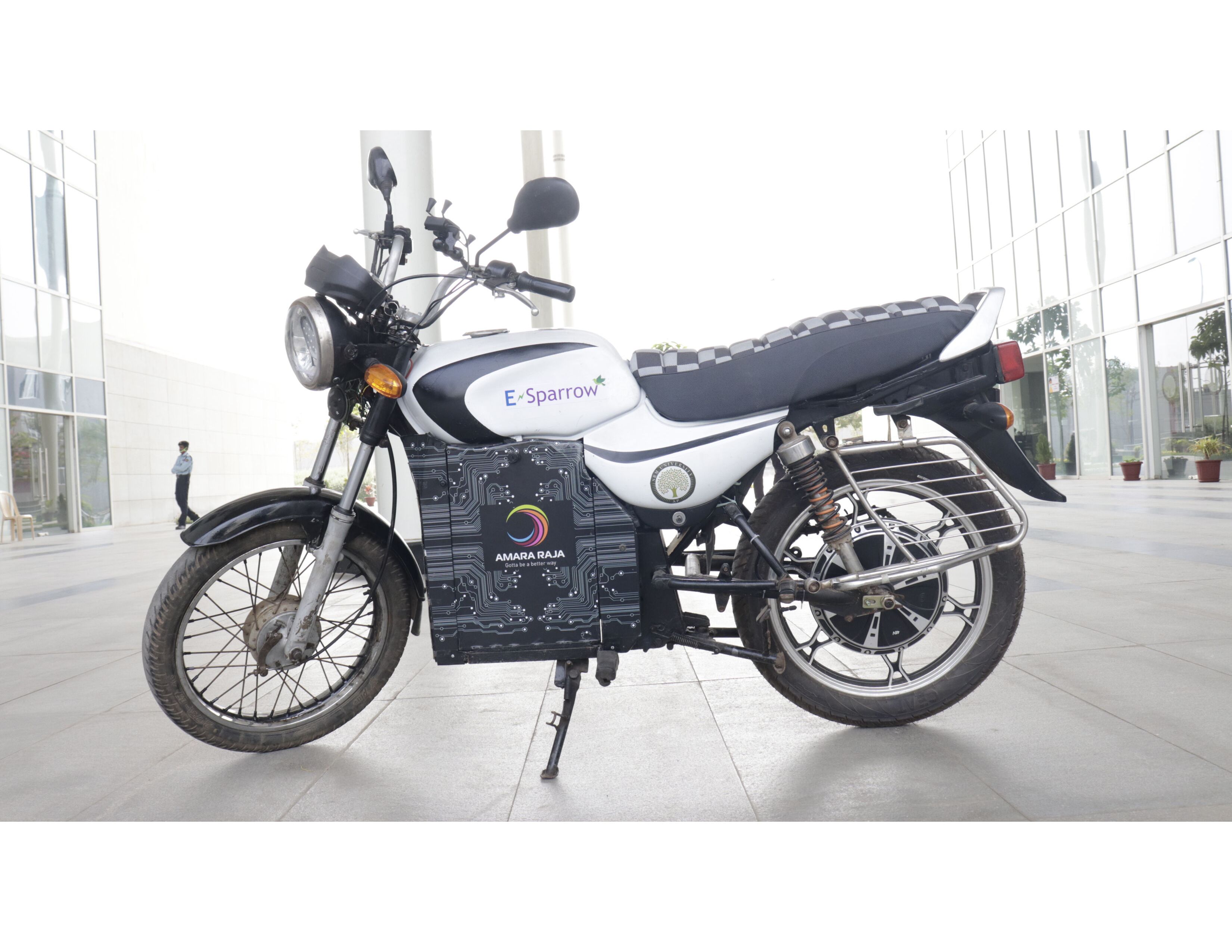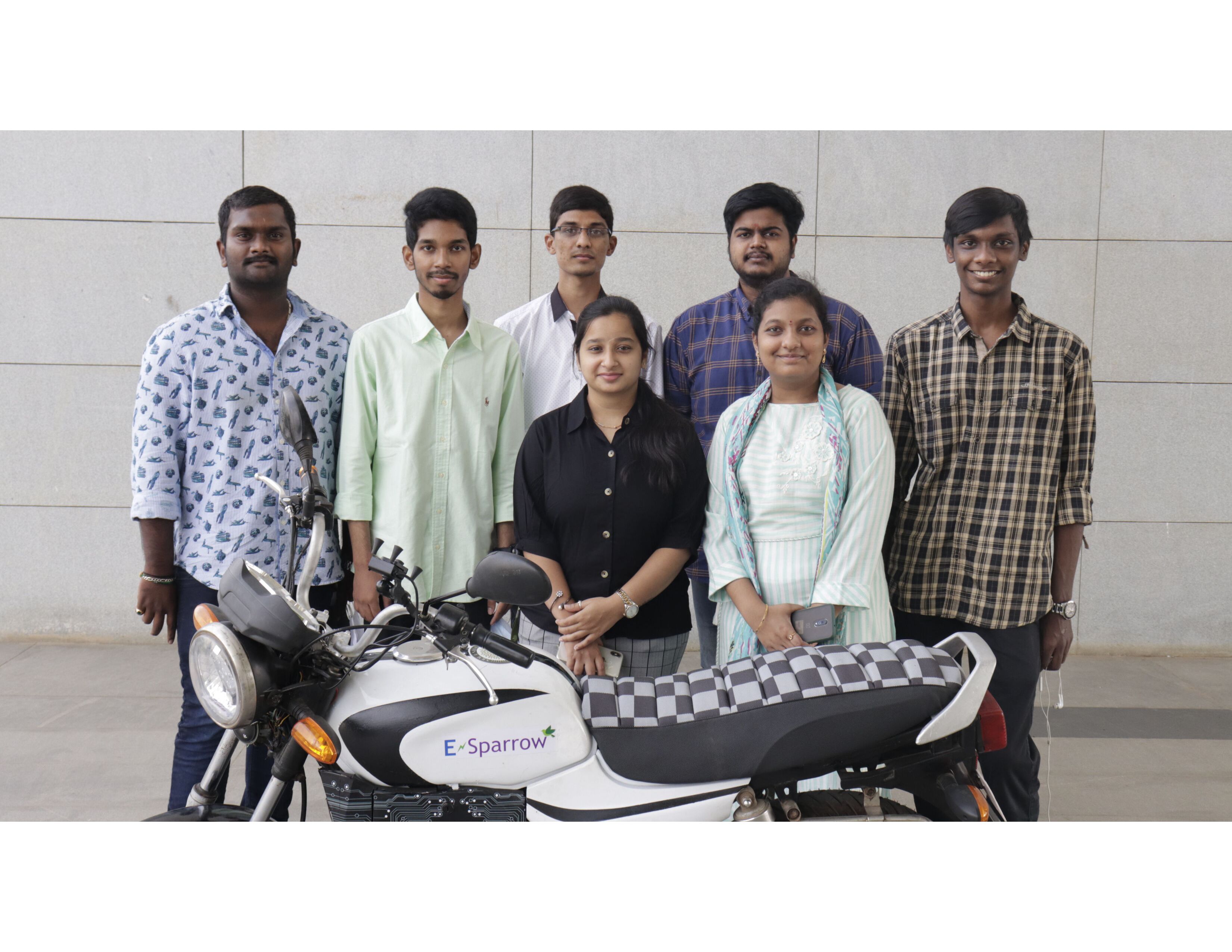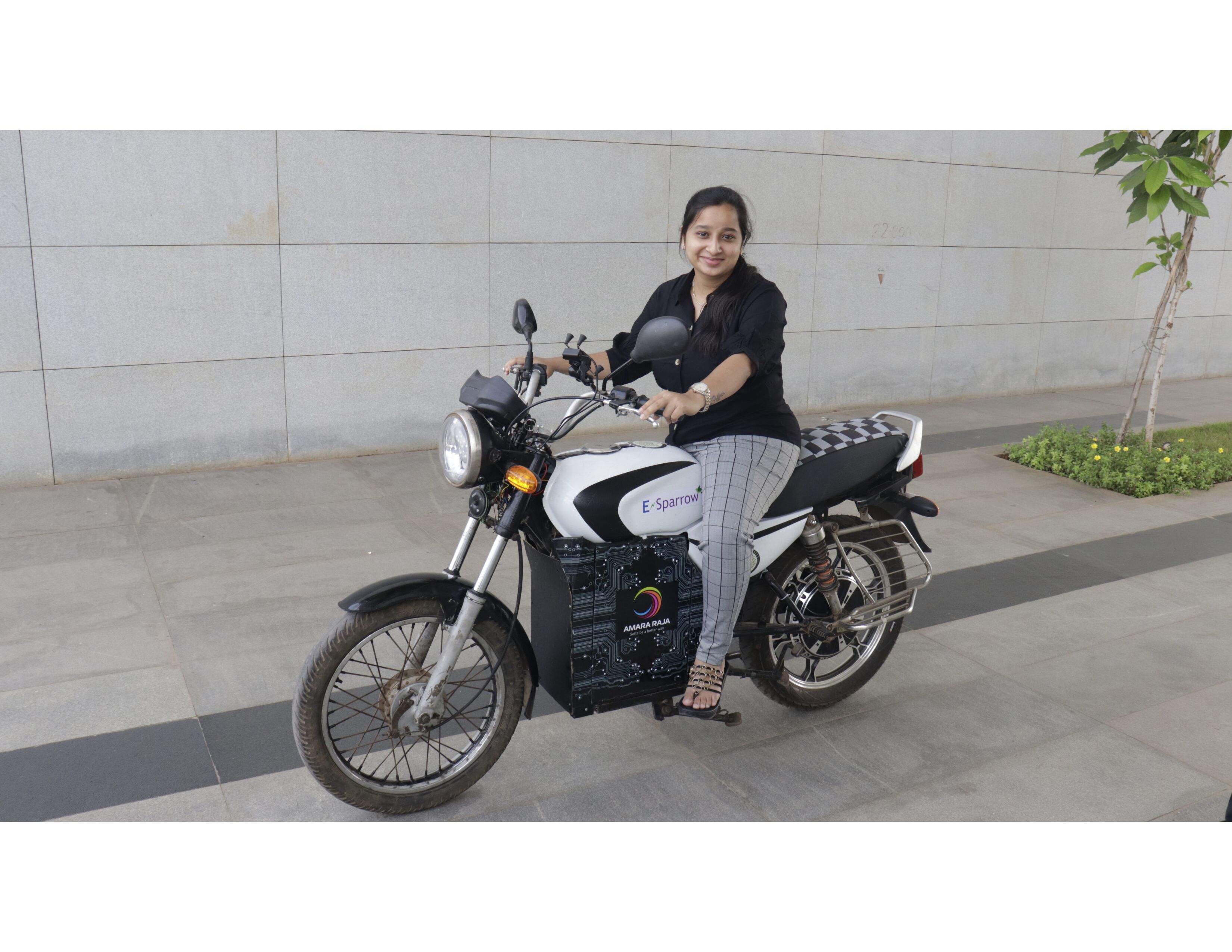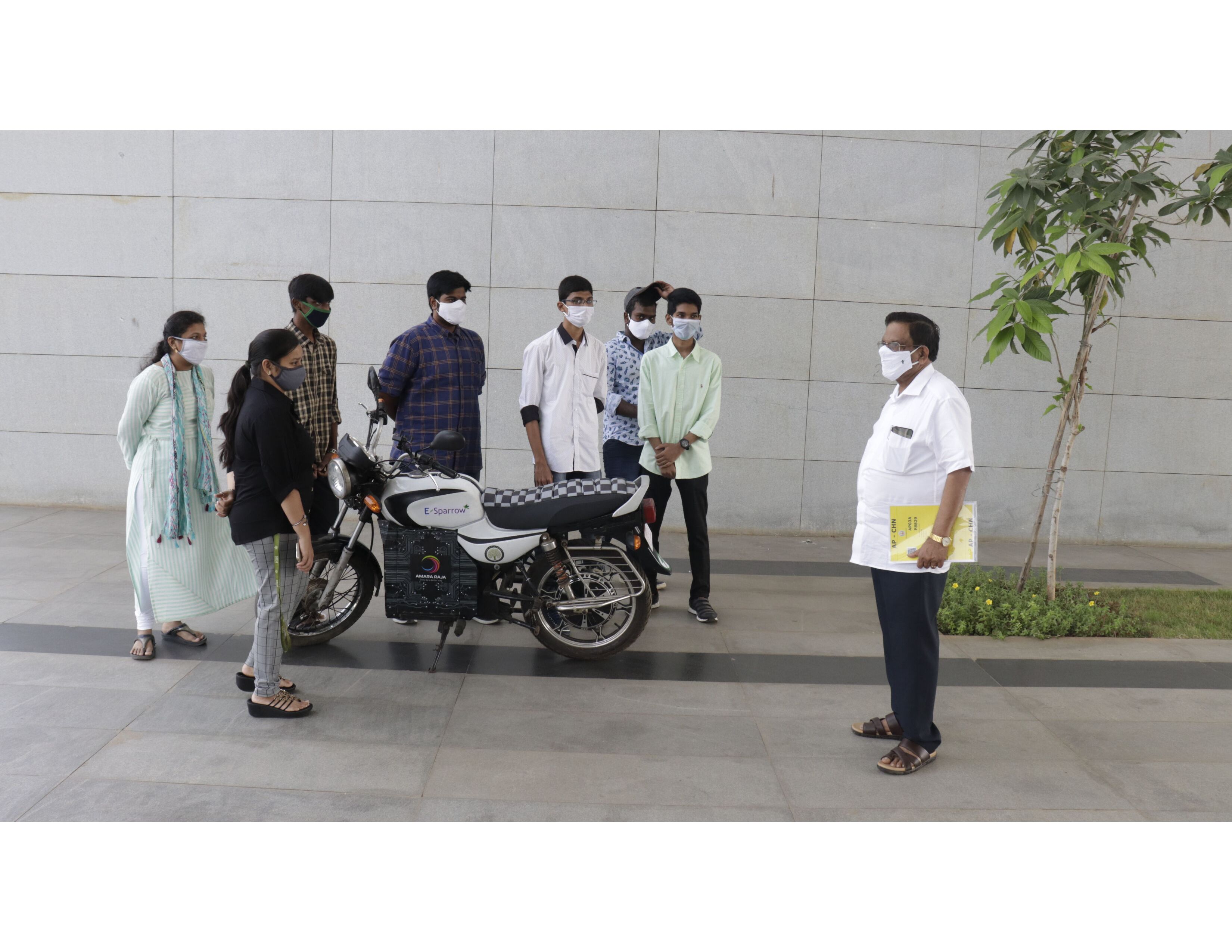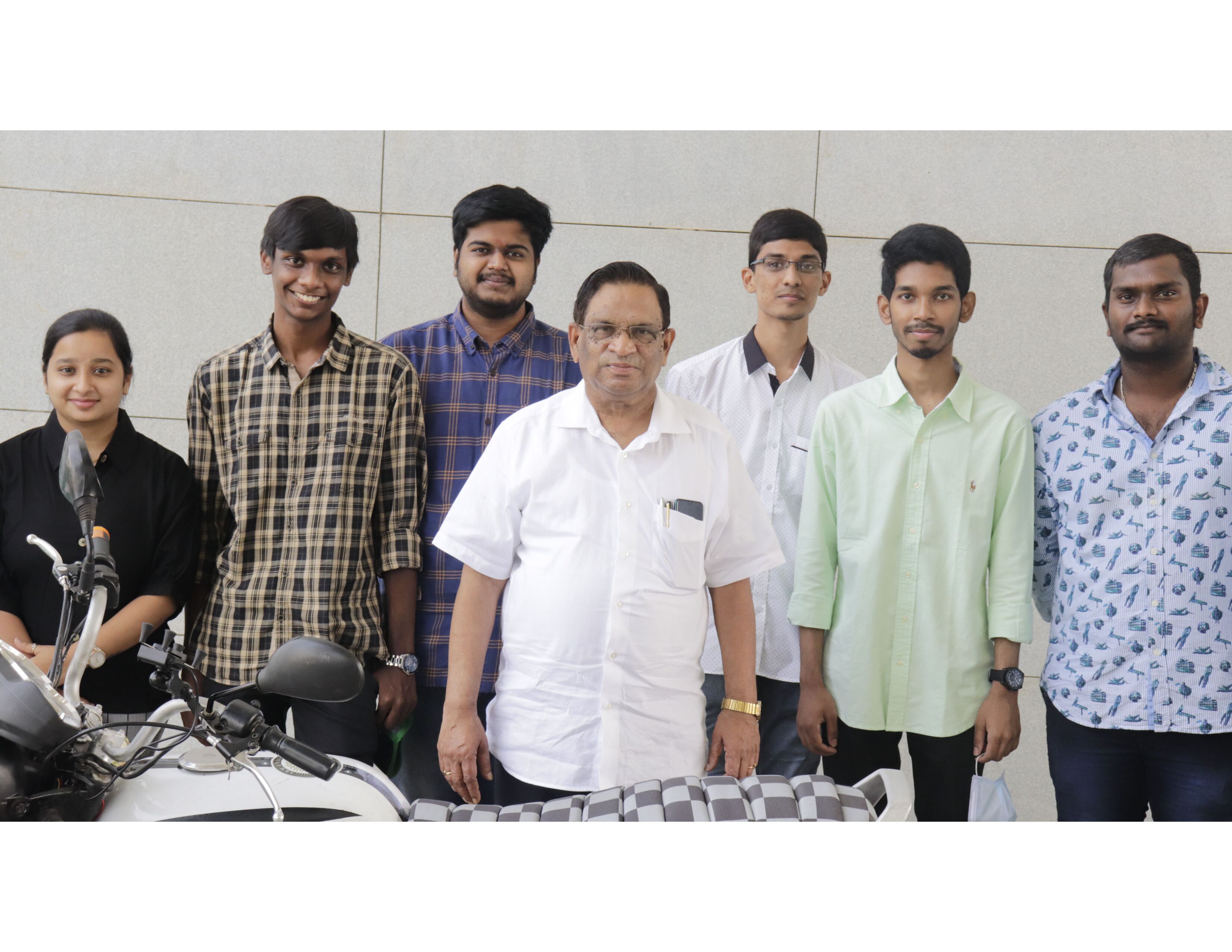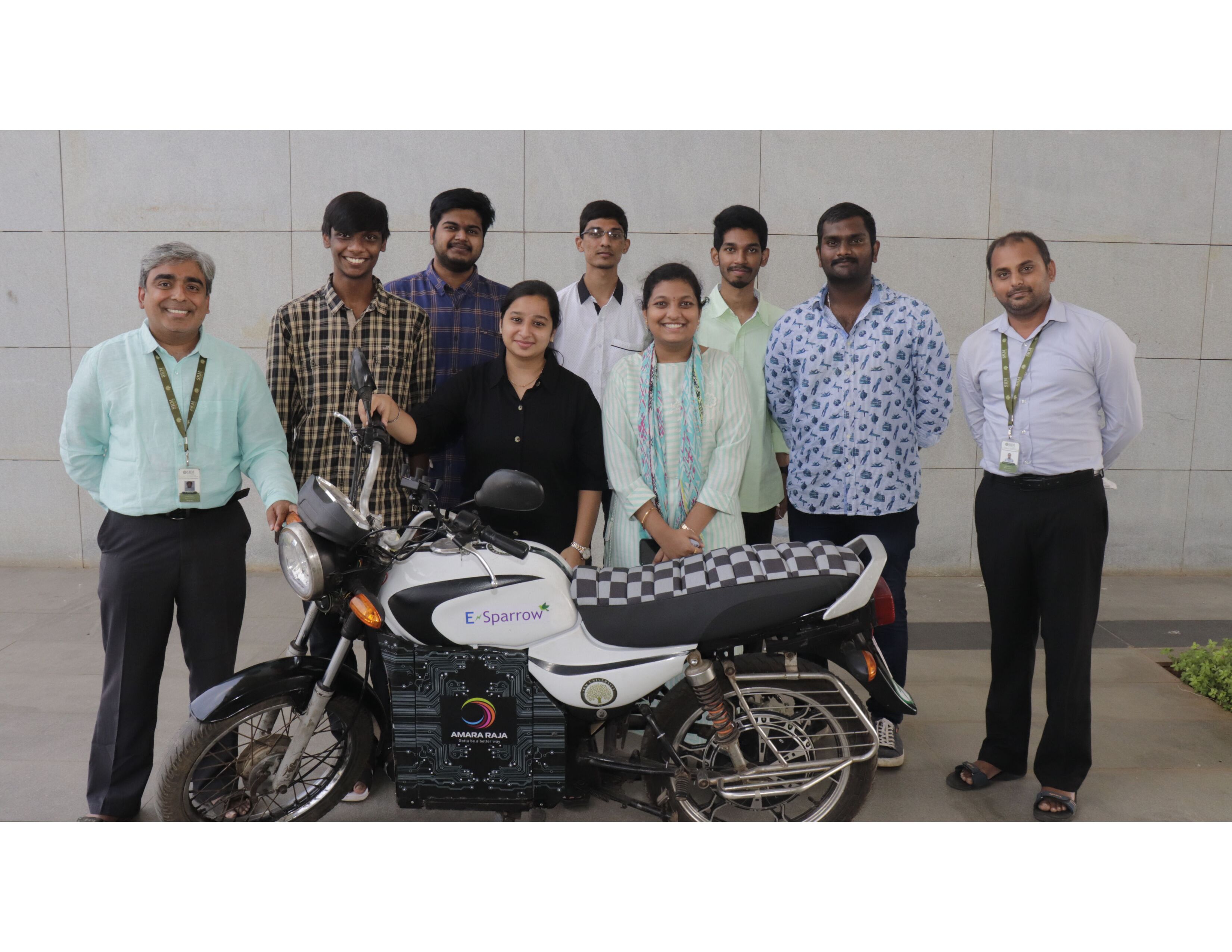- Undergraduate students design e-bike for sustainable environment February 4, 2021
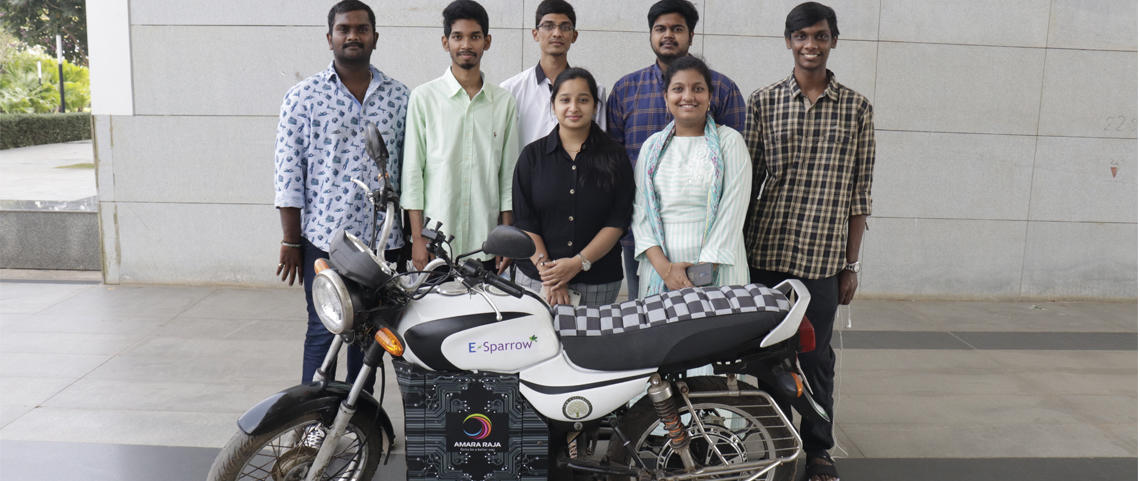
Advancing the celebration, Prof D Narayana Rao, Pro Vice-Chancellor, SRM AP took the virtual podium to comment “Science and Technology is the driving force for the economic development of India. We need to encourage young scholars by providing a vibrant and conducive research environment. Expanding the frontiers of knowledge by triggering interest among students must be the priority of the institutions. Also, focus should be on translational research with societal applications through collaborative research to make our nation a global leader.”
The team comprises of undergraduate students – Mr Raviteja Reddy, Mr A Chaitanya, Mr P M Aditya, Mr K Praveen, K Yeshashwini, A Sravya, K Vasu, and G Priyanka along with faculty members – Dr Venkata N Nori, Associate Professor, and Dr Panchagnula Jayaprakash Sharma, Assistant Professor, Department of Mechanical Engineering. Aditya reveals, “We endured several challenges in various aspects of retrofitting the conventional petrol motorcycle. Also, designing a portable battery system, enhancing the performance of the Hub motor, Chassis improvements, etc. enriched our understanding of electric vehicles and manufacturing techniques.”
Conversion of IC engine bike to an e-bike is considered to be a potential business venture by the team. Sharing their forthcoming plans, Aditya informs, “We are working on additional designs and ideas to incorporate the best possible features to make the e-bike more reliable. We heartily thank Prof D Narayana Rao, Pro Vice-Chancellor, for his continuous support. Also, Dr Venkata Nori and Dr Jayaprakash propelled us to create a steadfast model by relentlessly helping us in improving our design to make our model more cost-effective.”
- Panel Discussion on Union Budget 2021-22 February 3, 2021
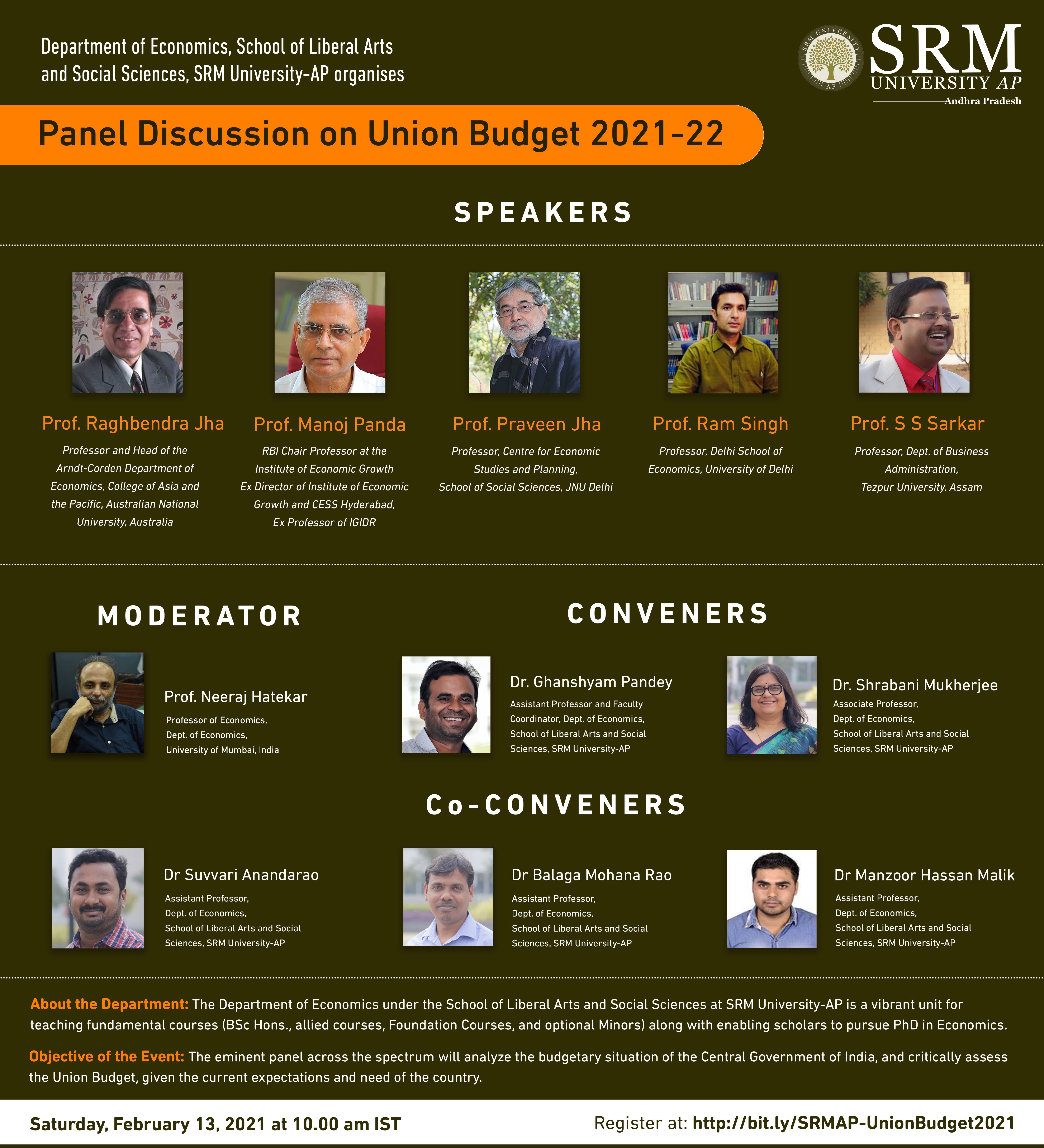 Objective of the Event: The world is facing a severe pandemic driven crisis and India is not an exception. Academics, Industry and the public are eagerly waiting for the revival of the economy. We cannot ignore the role of government. India needs a robust budget which will boost the demand and stabilize the economy. This panel discussion will analyse the announced budgetary sectoral fund allocation and revenue design of GoI. In order to tap the potential revenue sources to cope up with the adverse impact of pandemic, whether budget has been delivered on expected lines. The objective of the event is to place a platform for better understanding about the budgetary situation of the Central Govt. and critical analysis of the Union Budget by the eminent academicians across the spectrum, given the current expectations and need of the country.
Objective of the Event: The world is facing a severe pandemic driven crisis and India is not an exception. Academics, Industry and the public are eagerly waiting for the revival of the economy. We cannot ignore the role of government. India needs a robust budget which will boost the demand and stabilize the economy. This panel discussion will analyse the announced budgetary sectoral fund allocation and revenue design of GoI. In order to tap the potential revenue sources to cope up with the adverse impact of pandemic, whether budget has been delivered on expected lines. The objective of the event is to place a platform for better understanding about the budgetary situation of the Central Govt. and critical analysis of the Union Budget by the eminent academicians across the spectrum, given the current expectations and need of the country.About the Department: The Department of Economics under the School of Liberal Arts and Social Sciences at SRM University-AP, is a vibrant unit for teaching fundamental courses (core & electives) for B.Sc Hons in Economics along with allied courses for students across other departments. Along with Foundation Courses and optional Minors across other departments, we ensure that the education imparted is justly multidisciplinary so that it helps all the students in rational decision making in the next step in life with proper knowledge. Currently the department offers B.Sc. (Hons.) and PhD in Economics. We have designed an excellent program structure which can cater to the growing market demand for professional economists and policy researchers. These programs in Economics emphasize on the application of economic theories and trained professionals for lifetime learning. This unit is expecting to offer the postgraduate program with specialisation in Econometrics, Finance, Trade and Development in coming years. It is a growing department for research on diverse topics spanning the worlds of theory and practice of economics and interdisciplinary subjects. The vision of the department is to achieve an educational environment committed to excellence, creating employability through skill development, making capacity building for future economists and social scientists. The broader goal is to analyse the socio-economic environment for policy framing with efficient implementation of the policies and designing proper road map for national and sub-national governments. In nutshell, it commits to contribute to welfare generation for the society through creating proper knowledge base and conducting good quality research.
Registration Link: Click Here
Continue reading →- Research Day Celebration 2021 SRM University-AP February 1, 2021
Higher Education Digest
Continue reading →

Global Green News
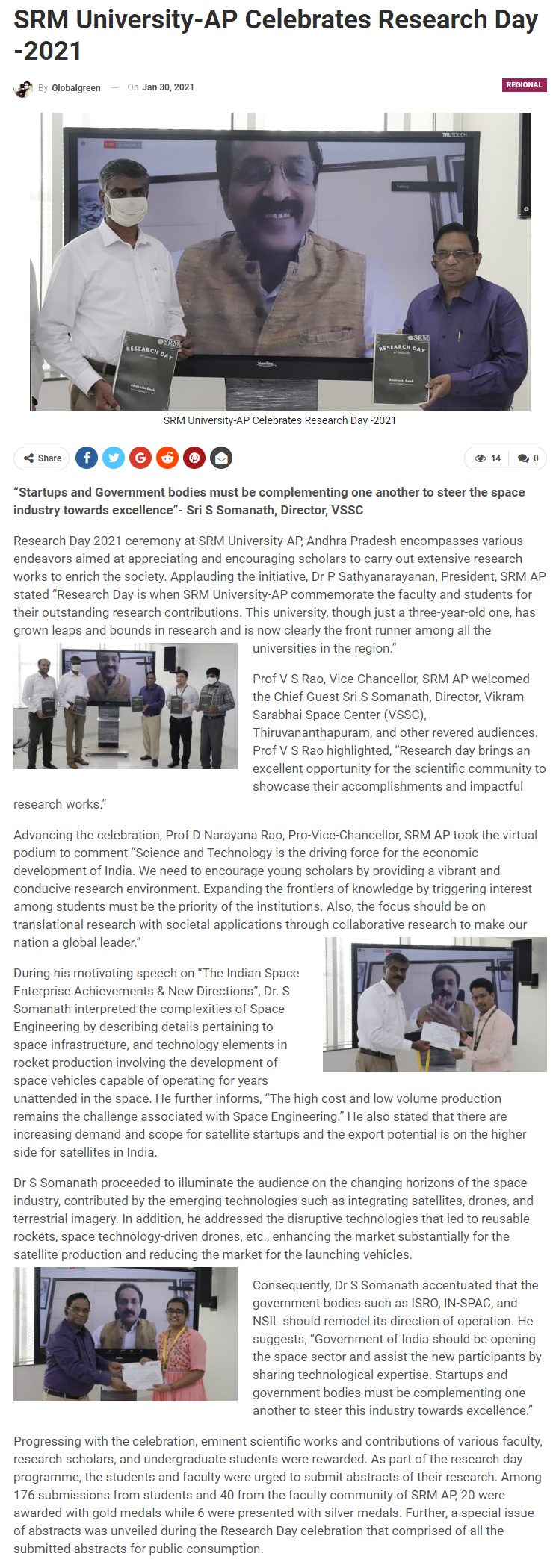
United News of India (UNI)
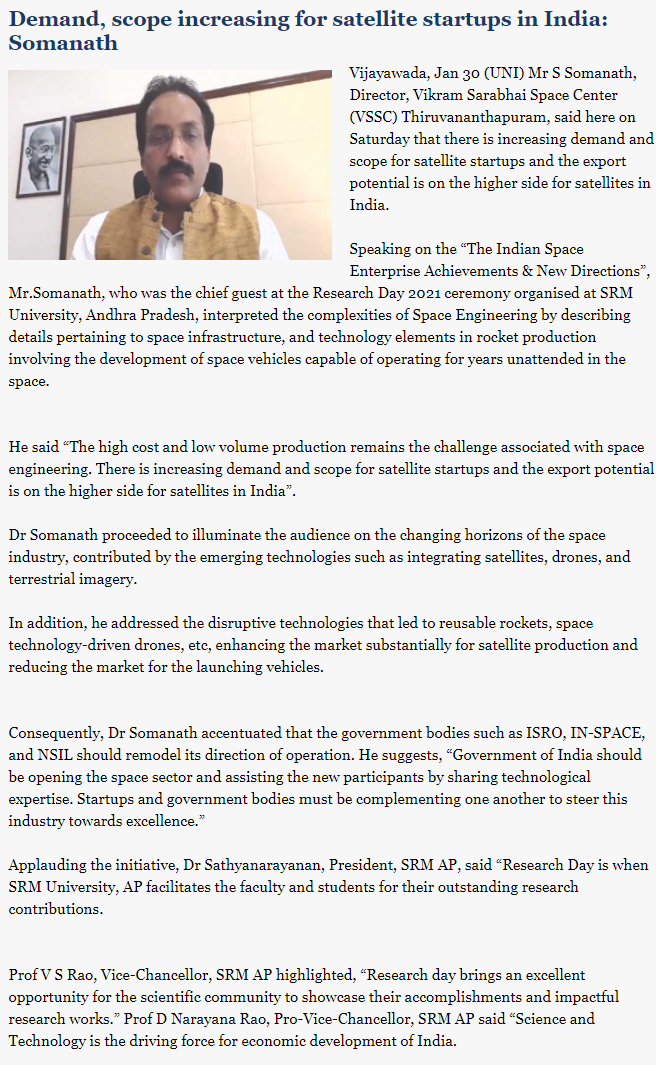
India Education Diary
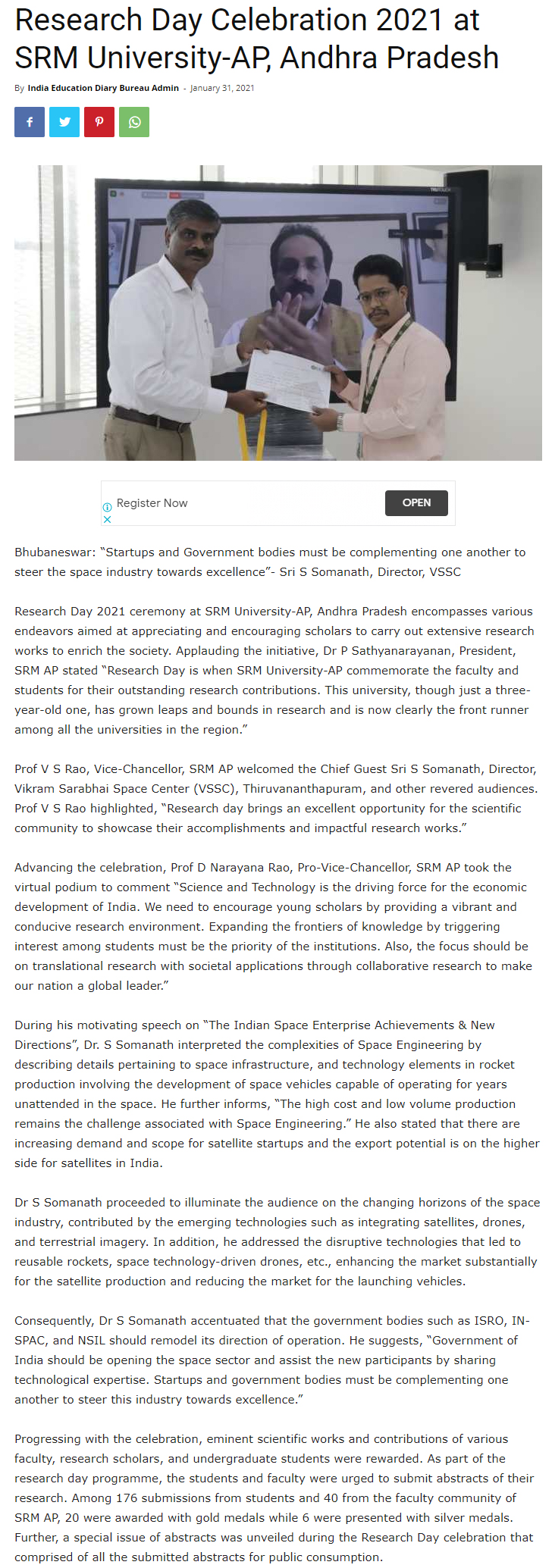
The Hindu – Jan 31
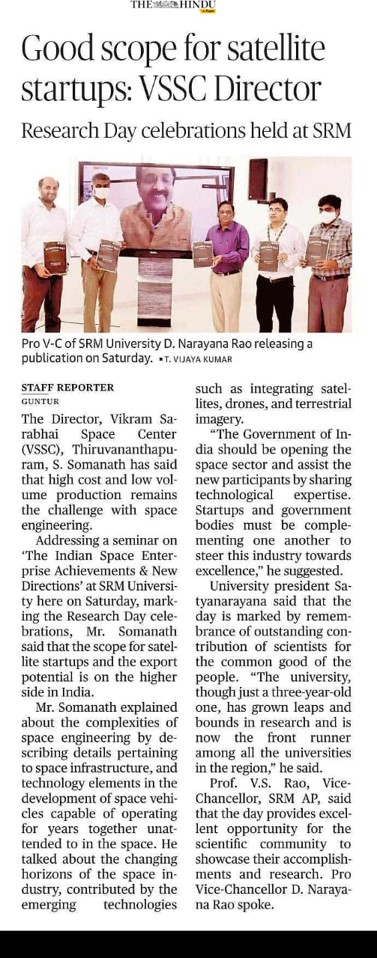
United News of India – Jan 31
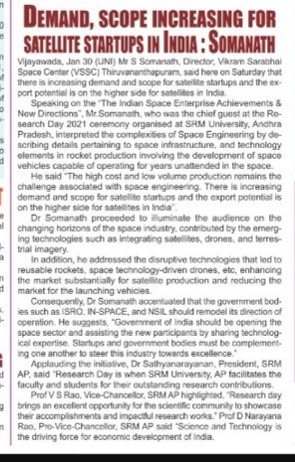
Hans India – Jan 31
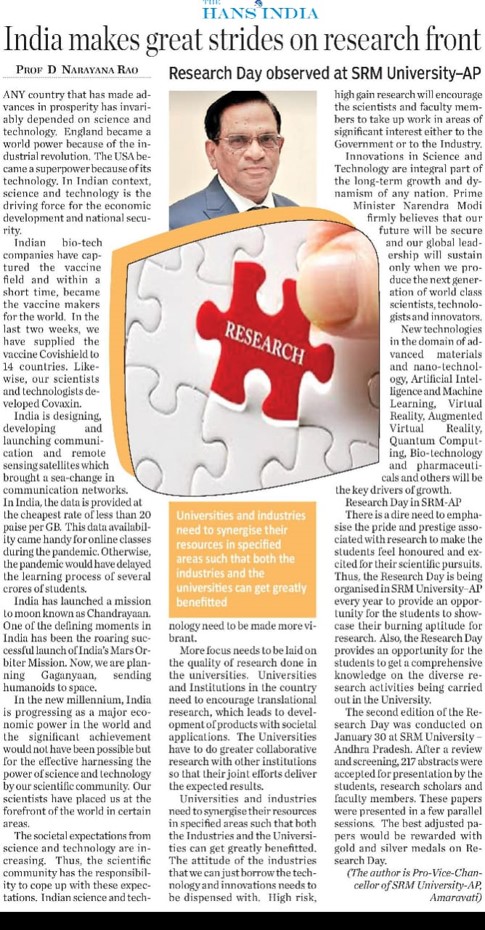
The Hans India

Sangri Today
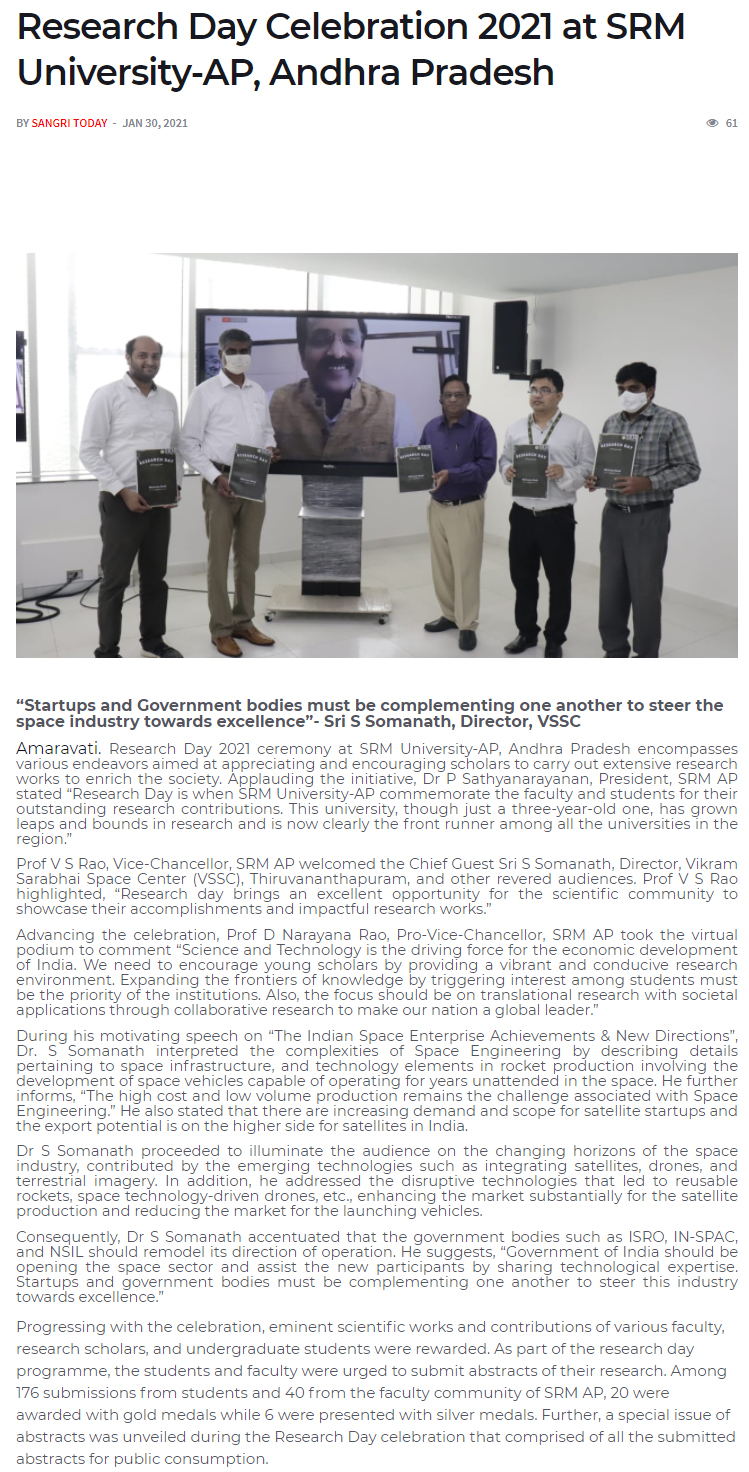
The Hawk

The Hawk, Haridwar- Jan 31
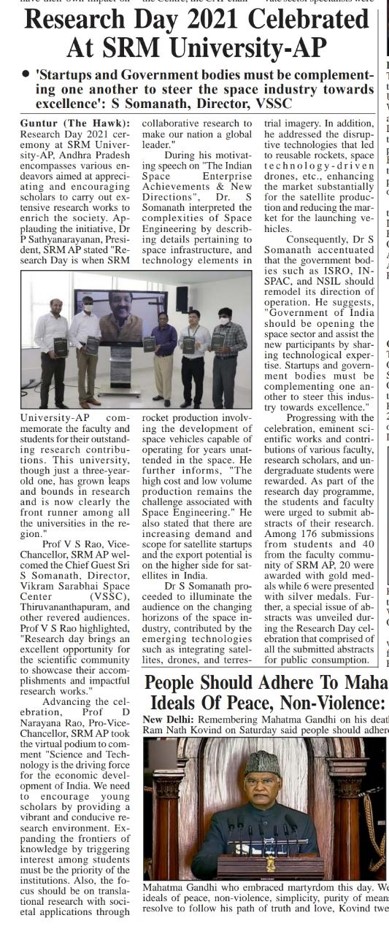
Media Bulletins
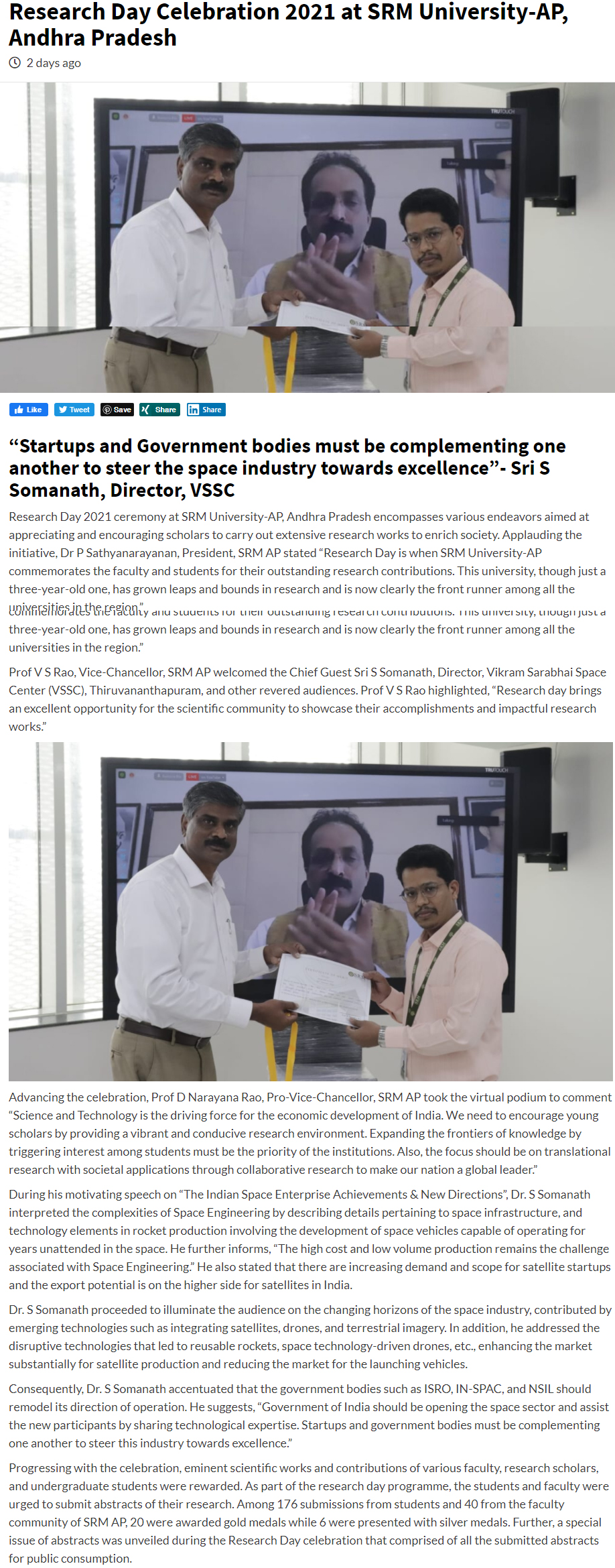
Business News This Week

The Hans India – Jan 30
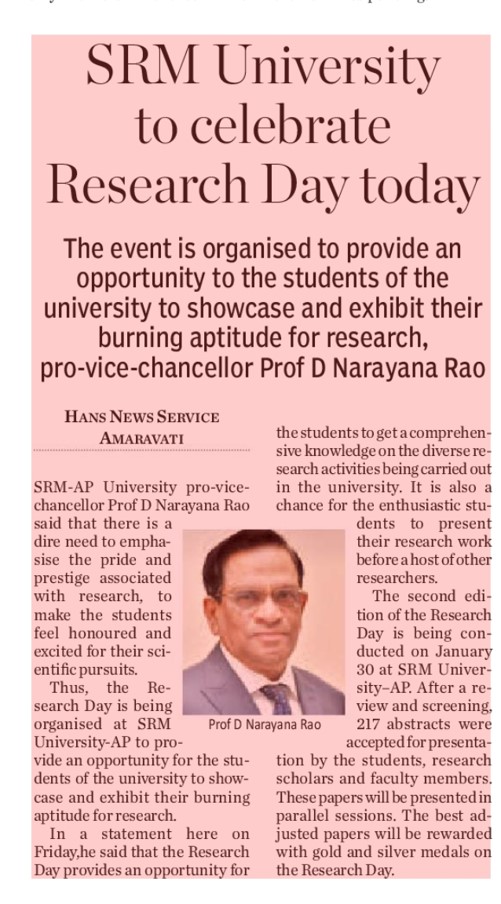
PrajaSakthi – Jan 31
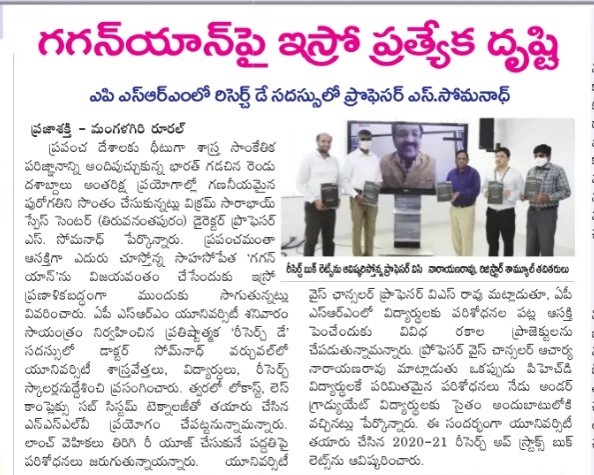
Sakshi – Jan 31
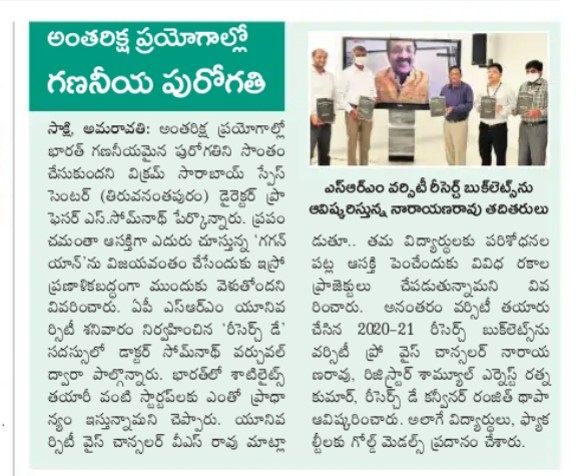
Eenadu – Jan 31

Andhra Prabha – Jan 31
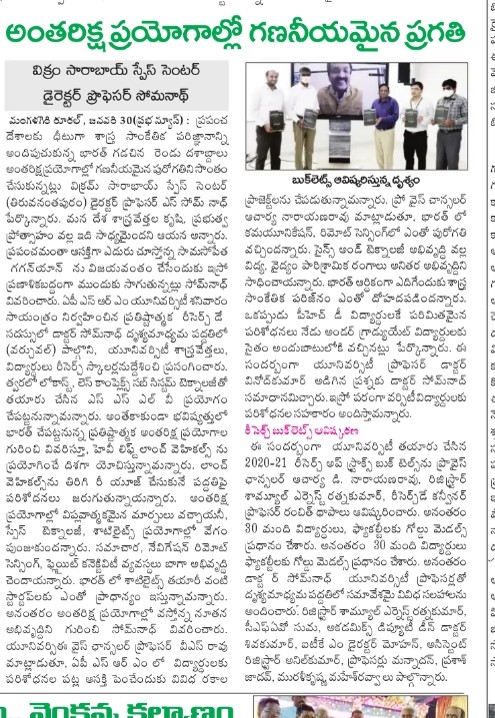
- Republic Day Celebrations SRMAP February 1, 2021
The Hans India – Jan 27
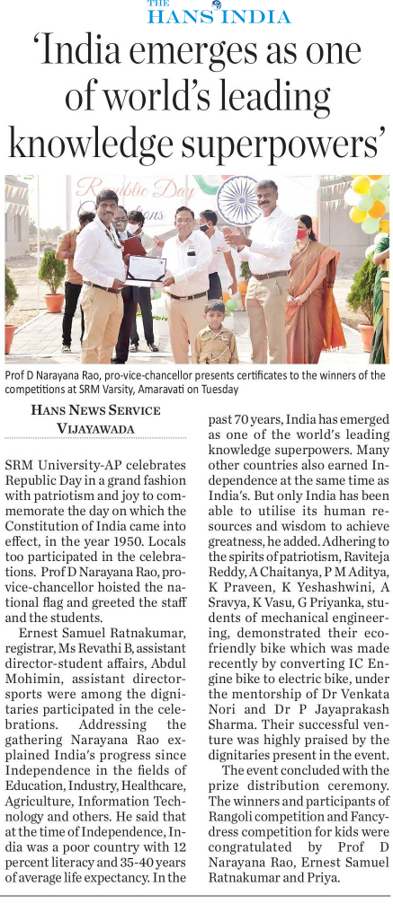
College Dunia
Continue reading →
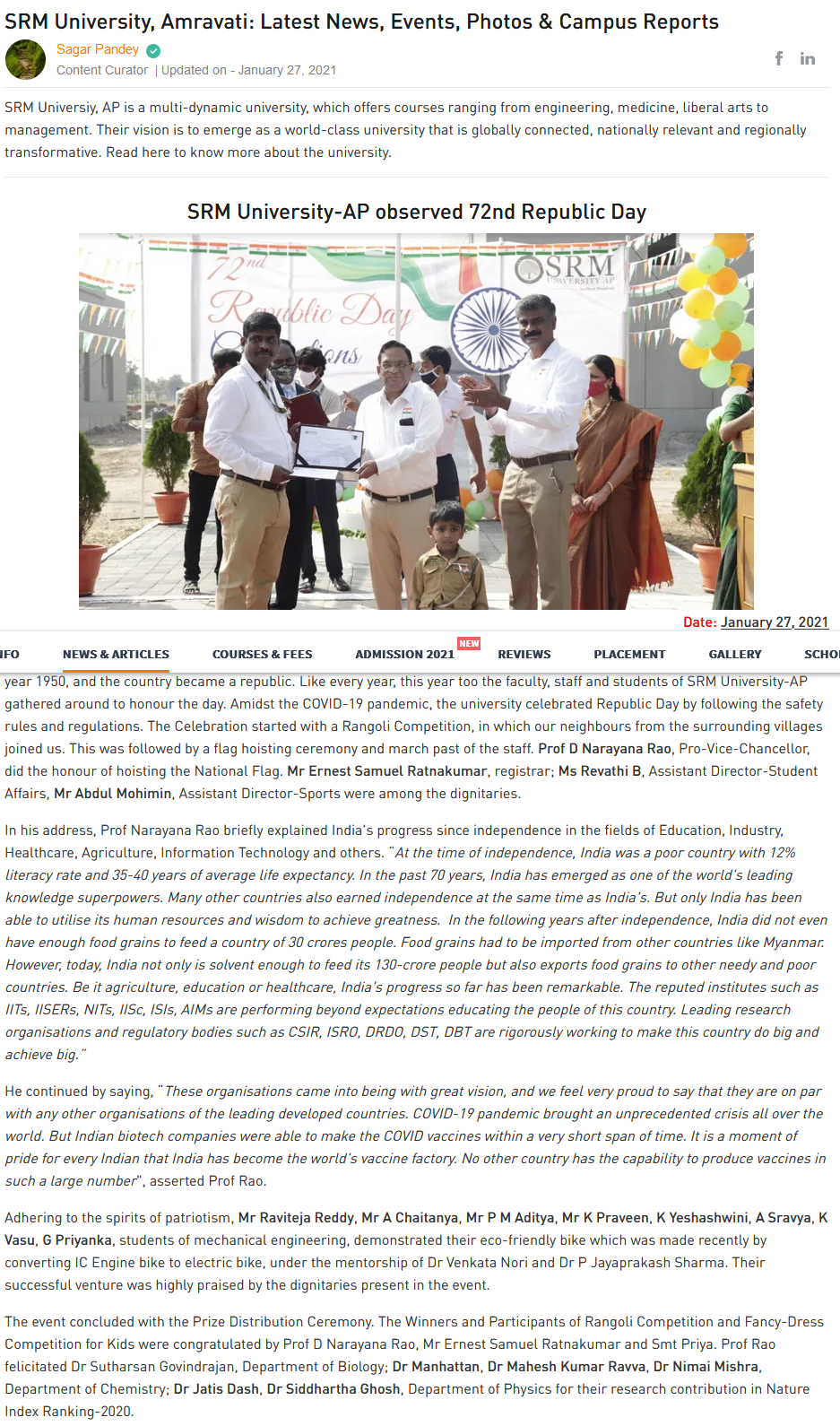
Andhra Jyothy – Jan 23
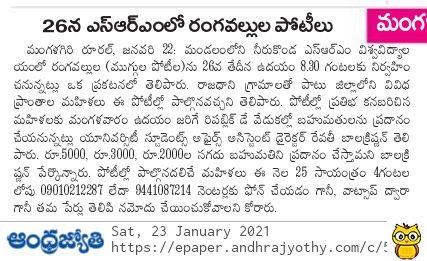
Visalaandhra – Jan 23
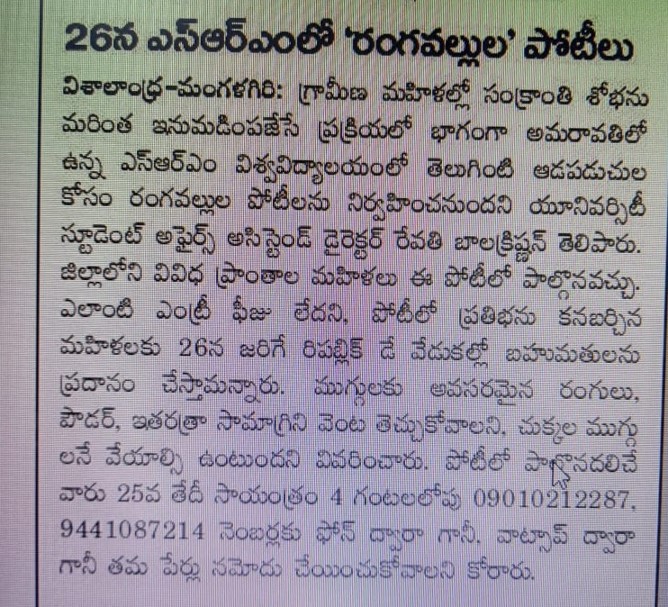
Andhra Prabha – Jan 23
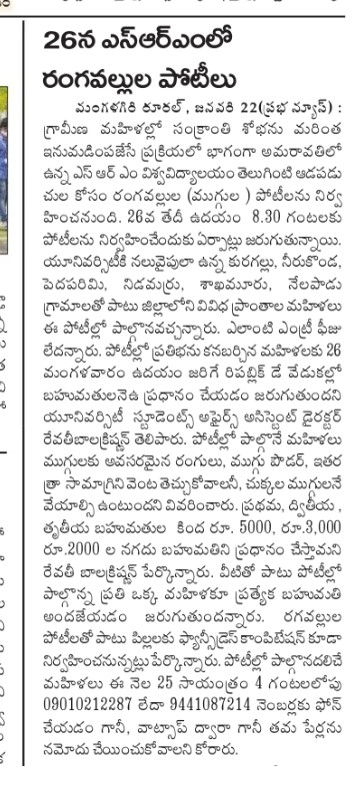
Vaartha – Jan 23
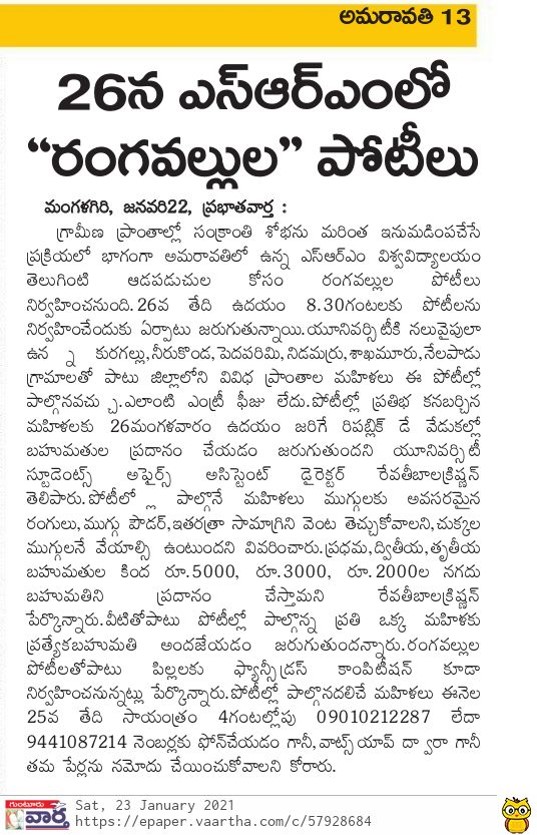
Vaartha – Jan 27
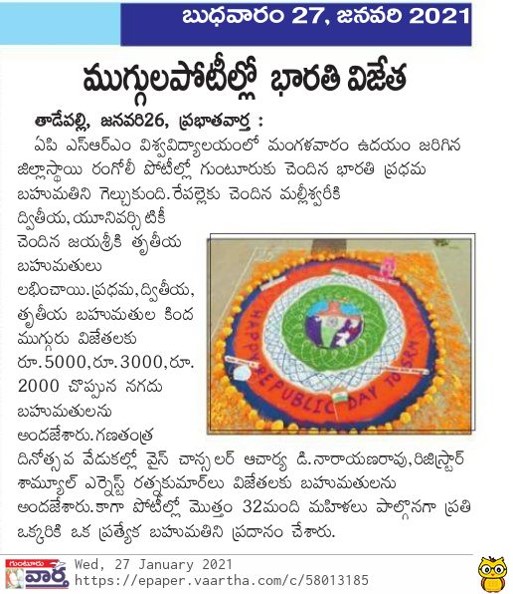
Prajasakthi – Jan 27
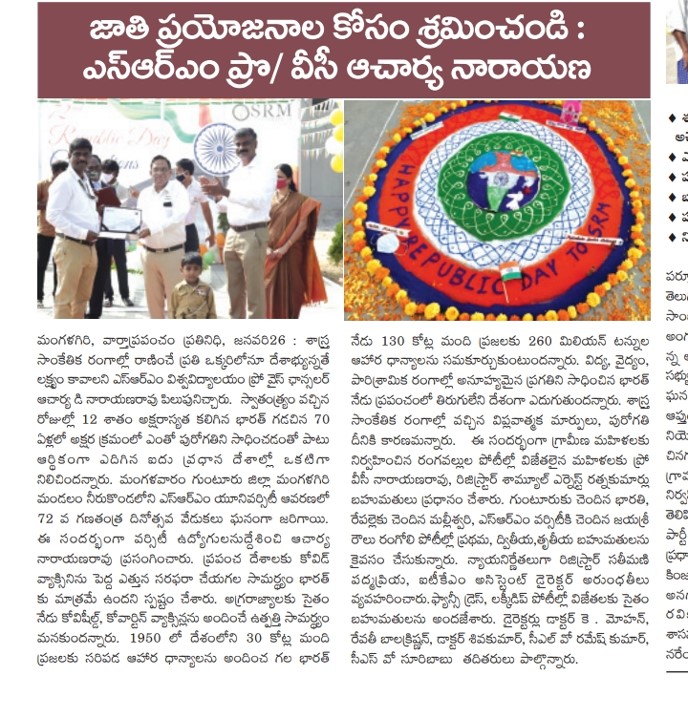
Andhra Bhoomi – Jan 27
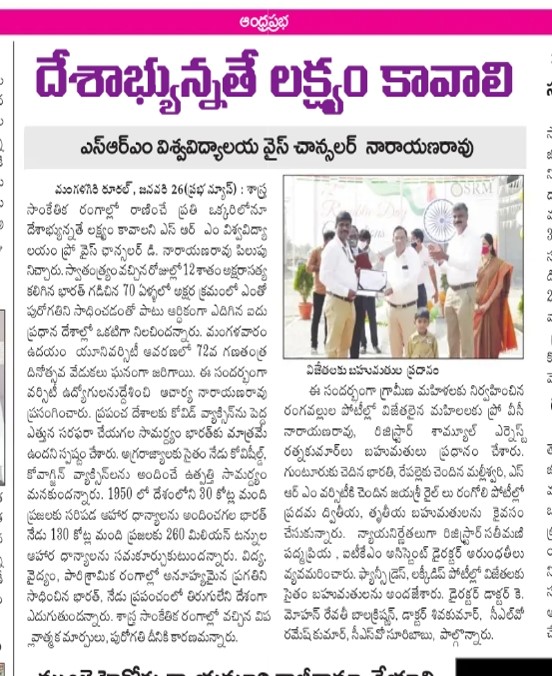
Andhra Jyothi – Jan 27
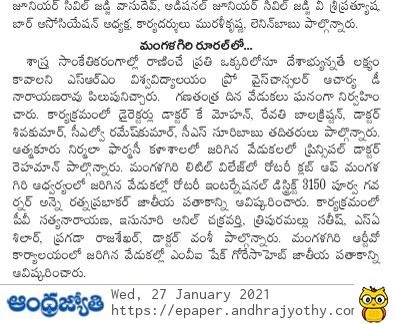
Vaartha – Jan 27-
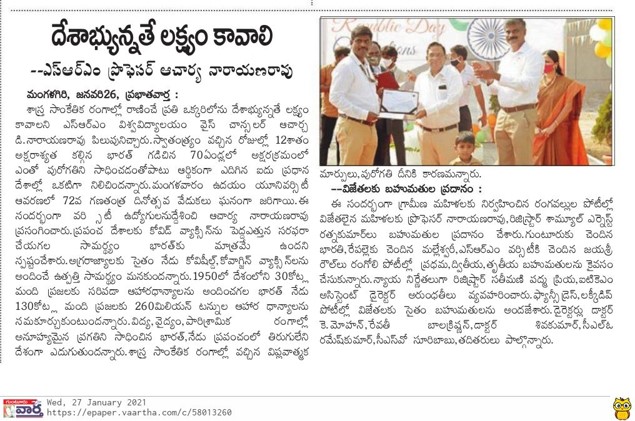
Andhra Prabha – Jan 27
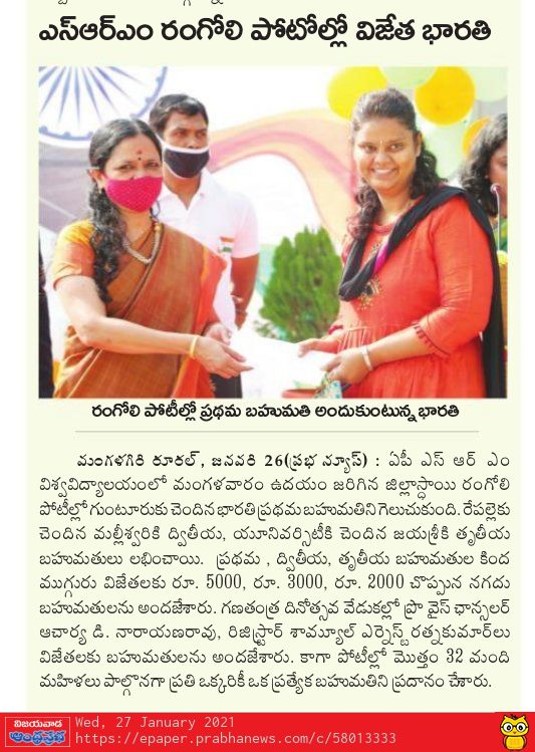
- Prof Siva Sankar Y’s remarkable research paces up wireless data transmission February 1, 2021
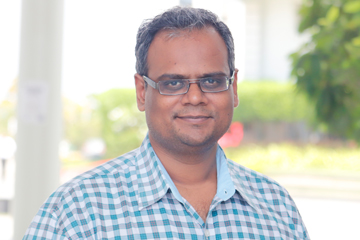 Prof Siva Sankar Y, Professor & Head, Department of Electronics and Communication Engineering, SRM University-AP, Andhra Pradesh published a research paper titled “60 GHz common gate single stage current reuse cascode LNA topology for high data rate applications” in the Journal of Electronic Materials. In the recent era, wireless communication has become essential in the lives of mankind. The data transfer rate of wireless systems varies from a few kilobits per second (kbps) to gigabits per second (Gbps), and the distance of communication supported by these technologies fluctuate from a few meters to kilometers.
Prof Siva Sankar Y, Professor & Head, Department of Electronics and Communication Engineering, SRM University-AP, Andhra Pradesh published a research paper titled “60 GHz common gate single stage current reuse cascode LNA topology for high data rate applications” in the Journal of Electronic Materials. In the recent era, wireless communication has become essential in the lives of mankind. The data transfer rate of wireless systems varies from a few kilobits per second (kbps) to gigabits per second (Gbps), and the distance of communication supported by these technologies fluctuate from a few meters to kilometers.Gbps transmission entails the transfer of huge data between different devices such as high-definition (HD) video cameras, smartphones, HD set-top boxes, HD DVD players, and high-definition printers. Realizing Gpbs transmission requires operating frequency of several tens of GHz to hundreds of GHz. To meet the escalating demand for high data transfer rates, wireless technologies are penetrating the millimeter wave technology domain, which supports transmission data rates up to Gbps within small distances.
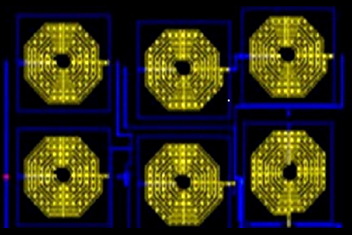 Layout of the proposed circuitMillimeter (mm) wave spectrum can be used for such high-speed wireless communication. Dr Siva Sankar informs, “One of the major challenges in realizing mm wave based transceivers is the design of the CMOS analog RF components. In the design of CMOS RF components, power dissipation, and speed are the two important and conflicting factors that lay stringent requirements on RF design. In our work, RF component design has been used in mmWave transceivers.”
Layout of the proposed circuitMillimeter (mm) wave spectrum can be used for such high-speed wireless communication. Dr Siva Sankar informs, “One of the major challenges in realizing mm wave based transceivers is the design of the CMOS analog RF components. In the design of CMOS RF components, power dissipation, and speed are the two important and conflicting factors that lay stringent requirements on RF design. In our work, RF component design has been used in mmWave transceivers.”Dr Siva Sankar and his research group developed a high frequency, low noise LNA that can be used in mmWave transceivers to facilitate high data transfer rates. The professor explains, “The designed LNA can be used in mm wave transceivers. The speed (operating frequency) of these components is chosen to be 60GHz because the spectrum around 60GHz is available for unlicensed operation in many regulatory domains including the USA, Japan, Canada and Australia.”. Advancing the research, Dr Siva Sankar and his research group will focus on high speed RF components such as mixers, PLL, and others to realize 60 GHz.
Continue reading → - Panel Discussion on Union Budget 2021-22 February 3, 2021


